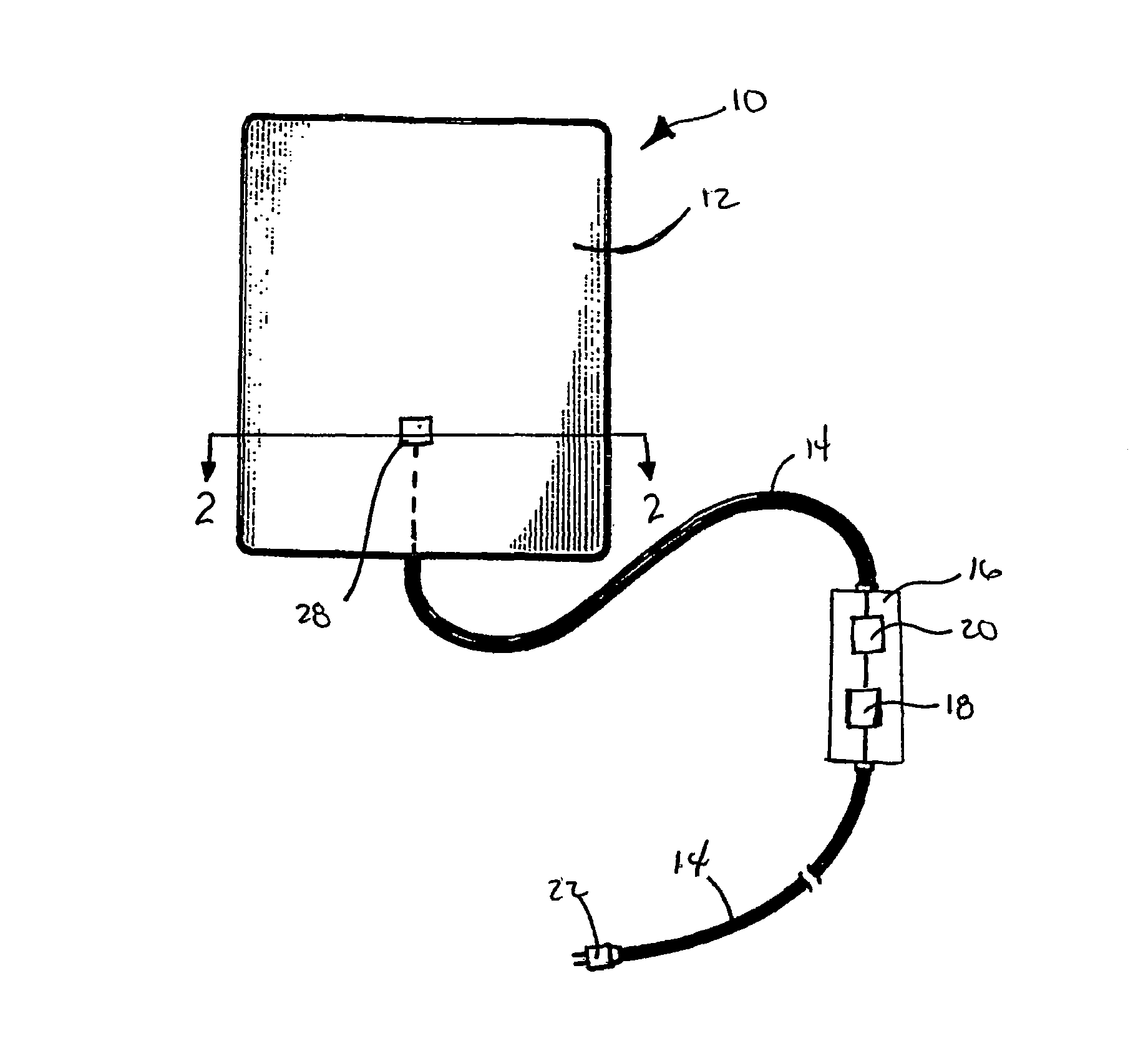Heating pad
a heating pad and electric heating technology, applied in the field of improved electric heating pads, can solve the problems of skin burns from electric heating pads, skin burns, etc., and achieve the effect of preventing burns and preventing burns
- Summary
- Abstract
- Description
- Claims
- Application Information
AI Technical Summary
Benefits of technology
Problems solved by technology
Method used
Image
Examples
Embodiment Construction
[0028]FIGS. 1 and 2 show a preferred embodiment of an electric heating pad 10 of this invention which can eliminate or reduce skins burns by detecting when both sides of the electric heating pad are covered and shutting off the device.
[0029]The electric heating pad 10 of this invention seeks to prevent skin burns by: monitoring an absolute temperature of each surface of the heating pad 10; monitoring a temperature difference between each surface of the heating pad 10, where a small temperature difference indicates that both sides of the heating pad 10 are covered; and by monitoring a duty cycle of the heating pad 10, where a large off portion of the duty cycle indicates both sides of the heating pad 10 are covered.
[0030]As shown in FIGS. 1 and 2, the electric heating pad 10 according to an embodiment of this invention comprises a pad 12, a cord 14, a control box 16 including an on / off switch 18 and a processor 20, and a plug 22. The processor 20 preferably comprises a programmable l...
PUM
 Login to View More
Login to View More Abstract
Description
Claims
Application Information
 Login to View More
Login to View More - R&D
- Intellectual Property
- Life Sciences
- Materials
- Tech Scout
- Unparalleled Data Quality
- Higher Quality Content
- 60% Fewer Hallucinations
Browse by: Latest US Patents, China's latest patents, Technical Efficacy Thesaurus, Application Domain, Technology Topic, Popular Technical Reports.
© 2025 PatSnap. All rights reserved.Legal|Privacy policy|Modern Slavery Act Transparency Statement|Sitemap|About US| Contact US: help@patsnap.com



